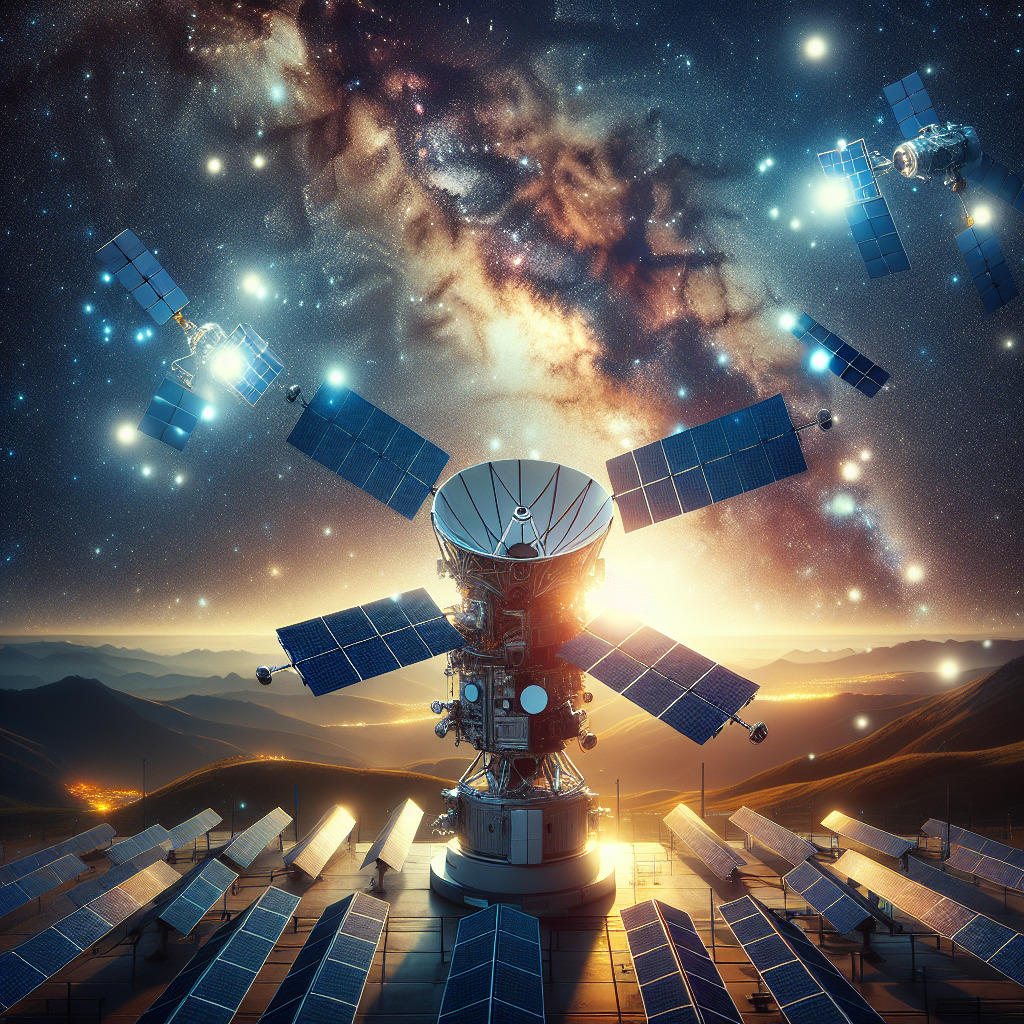Key Takeaways
The Environmental Impact of Starlink Satellites on Astronomy and Earth
The growing network of Starlink satellites, designed by SpaceX, aims to bring high-speed internet to even the most remote areas of the globe. While this ambitious project has the potential to revolutionize global communications, concerns have been raised about its environmental impact, both on Earth and in the heavens. This post delves into the effects of these satellites on astronomy, the potential risks they pose to the Earth, and how innovations may help mitigate these issues.
The Effects on Astronomy
The most immediate and noticeable impact of the Starlink satellites is on our view of the night sky. Both professional astronomers and amateur stargazers are raising alarms about how these satellites are altering our celestial landscape.
- Increased Light Pollution: Starlink satellites reflect sunlight and can be seen as streaks of light moving across the sky. This increased light pollution makes it difficult for both optical and radio telescopes to observe faint objects in the universe.
- Interference with Research: Telescopes capture long-exposure images to study distant celestial bodies. The movement of satellites often results in streaks across these images, rendering many observations useless and significantly hampering astronomical research.
- Loss of Pristine Sky Views: For many, the night sky has a cultural and aesthetic significance. The presence of thousands of new artificial objects diminishes the natural beauty of the stars and planets visible from Earth.
Environmental Risks on Earth
Apart from the effects on astronomy, Starlink satellites pose several potential risks to our planet. These risks include increased space debris and environmental damage from satellite production and launches.
- Space Debris: With thousands of satellites being launched, the risk of collisions and the subsequent creation of space debris increases. This space debris can pose a hazard to other satellites and even to manned space missions.
- Resource Use and Emissions: The production, launch, and maintenance of satellites require significant resources and emit greenhouse gases. Additionally, satellites have a finite operational life, creating electronic waste once they become defunct.
- Impact on Wildlife: The launch of satellites can also have an effect on local ecosystems, including disturbances to wildlife habitats due to rocket launches and the operational noise.
Potential Benefits to Society
While the environmental impact of Starlink is a legitimate concern, it’s also essential to weigh these effects against the potential benefits that this satellite network could offer.
- Improved Internet Access: One of the primary goals of Starlink is to provide high-speed internet access to underserved and remote areas. Enhanced connectivity can lead to numerous benefits such as improved education, healthcare, and economic opportunities.
- Disaster Response: In areas hit by natural disasters, traditional communication networks may be down. Satellite internet can offer a reliable alternative, aiding in immediate response and recovery efforts.
- Advancement in Technology: The development and deployment of Starlink satellites push the boundaries of space technology and can lead to innovations that benefit other areas of science and industry.
Mitigating Environmental Effects
Recognizing the significant concerns, SpaceX and other organizations are taking steps to mitigate the environmental impacts of satellite constellations.
- Reducing Brightness: SpaceX has started to implement strategies to reduce the reflectivity of their satellites, such as applying dark coatings and using visors to block sunlight from reflecting off their surfaces.
- Collision Avoidance Systems: Advanced algorithms and automated systems are being developed to help satellites avoid collisions with each other and with space debris, thus reducing the risk of creating more space junk.
- Sustainable Practices: Efforts are being made to ensure that the manufacturing and launching processes are as environmentally friendly as possible. Research into biodegradable materials and more efficient launch systems continues to progress.
- Collaboration with Astronomers: Open communication channels between SpaceX and the astronomical community are helping to find the balance between technological advancement and the preservation of our night skies. Collaborative efforts are underway to minimize disruption to astronomical research.
Conclusion
The Starlink initiative embodies a paradox at the intersection of technological progress and environmental stewardship. While the benefits of improved global connectivity and advancements in space technology are clear, the environmental costs cannot be ignored. Through continued innovation and responsible practices, it is possible to find a balance that maximizes societal benefits while minimizing harm to both our planet and our view of the universe. Maintaining this delicate balance is crucial as we move towards a more connected and technologically advanced world.




